
CLIMATE OF CHANGE
Poll: Most Americans See Warming Planet As A Serious Problem
Numbers Way Up From Same Poll in 2009
Greenland sees unprecedented ice melt
Rio+20, the unhappy environmental summit

A Dangerously ‘Different’ Environment 
Mexico’s president enacts climate change legislation

The legislation sets targets for the increase in the use of renewable energy in Mexico
Mr Calderon said on Twitter that the law would make Mexico the “first developing country with integral legislation against climate change”.
The law, which sets targets on reducing greenhouse gas emissions and increasing the use of renewable energy, is only the second of its kind in the world.
‘International leader’
“Mexico is committed to reducing greenhouse gas emissions by 30% by 2020 and by 50% by 2050,” Mr Calderon said in another tweet.
“This law is part of the all the efforts that have made Mexico an international leader in environmental protection,” he added.
The law was signed on Tuesday, the UN Environment Programme’s World Environment Day.
As well as setting a target on greenhouse gas emissions, it stipulates that 35% of Mexico’s energy will have to come from renewable sources by 2024, and that government agencies will be obliged to use renewables.
Despite being the sixth-largest oil exporter in the world, correspondents say the oil sector has been declining in importance in Mexico in recent years.
The law also provides for the establishment of a trading scheme for greenhouse gas emissions permits.
The only similar legislation to have been enacted so far elsewhere in the world was introduced by the UK government in 2008. It pledged to reduce greenhouse gas emissions by 50% by 2050.
Scientists seek answers to Bolivian glacier melt
After inconclusive preliminary negotiations in Bonn, hopes for a globally binding climate deal by 2015 are fading, but for scientists the research and data-collection continues. An international team in Bolivia is now focusing on sub-tropical glaciers to find out why they are melting even faster than experts had previously thought…
Imagine a hotel that brings the destination to you. Imagine an experience so hard to explain,

Live Between, a concept design by HKS Architects, is a newly launched hotel experience for guests who enjoy the extreme. Their design seeks out urban cities to set up short-term residency between existing buildings. As it moves from city to city, it is designed and installed specific to its temporary inhabitance. Taking on various forms from a spider’s web to a constellation, the hotel formation is ever changing and always evolving. More images and architects’ description after the break.

Imagine a hotel that brings the destination to you. Imagine an experience so hard to explain, you can only see it to believe it. Imagine sleeping hundreds of feet above the ground, between buildings people work and live in. Imagine making your reservation, today. Hotel destinations are targeted towards urban cities of unique character. From Tokyo to New York, Dubai to London, the versatile hotel seeks to bring an additional economic bonus to cities known for hospitality and grandeur. This chameleon adaptability allows this design to move and expand as quickly as human life itself.

As the first mobile hotel brand with a mission of revitalization, {LB} also focuses on erecting between buildings or in cities stricken with hardship. Under utilized, unoccupied and abandoned buildings set the stage for a monumental design opportunity. While the Live Between hotel is installed between these buildings, hotel amenities and services are temporarily installed in the floor plates of these environments to accommodate guest needs. {LB} takes negative, depleted space and breathes life into it, renewing interest in an area forgotten.

Deconstructed pods on semi-trucks ceremonially move into town, generating a buzz within each city just as the freight cars of the circus once did. A sense of energy and anticipation slowly infiltrates each city, and people begin to flock to see the procession. Although nobody ever knows if or when it is coming, the buzz is always brewing.

For those hotel guests who cannot imagine jumping out of a plane or bungee jumping off a bridge, Live Between guests can rest assured their safety is secure. Designed in collaboration by architects, engineers, aerospace technicians and the multidisciplinary elite, the hotel is designed with a high strength cabling and tension pulley system. Each pod is a self-contained guestroom, with power, efficiencies and plumbing contained within the lower portion of the orb. As the exterior transparency reveals itself from solid to clear, from web-like to reflective, each aspect of the pod’s exterior is intricately designed to maximize the guest experience. Radical design, extreme imagination, superior engineering, and cutting edge technology combine to beat the unbeaten path, paving the way for the first ever urban hotel temporarily erected between existing buildings…
Sat May 5, 2012 SUPERMOON

White Killer Whale: Scientists Prepare To Find ‘Iceberg,’ Thought To Be Albino Orca
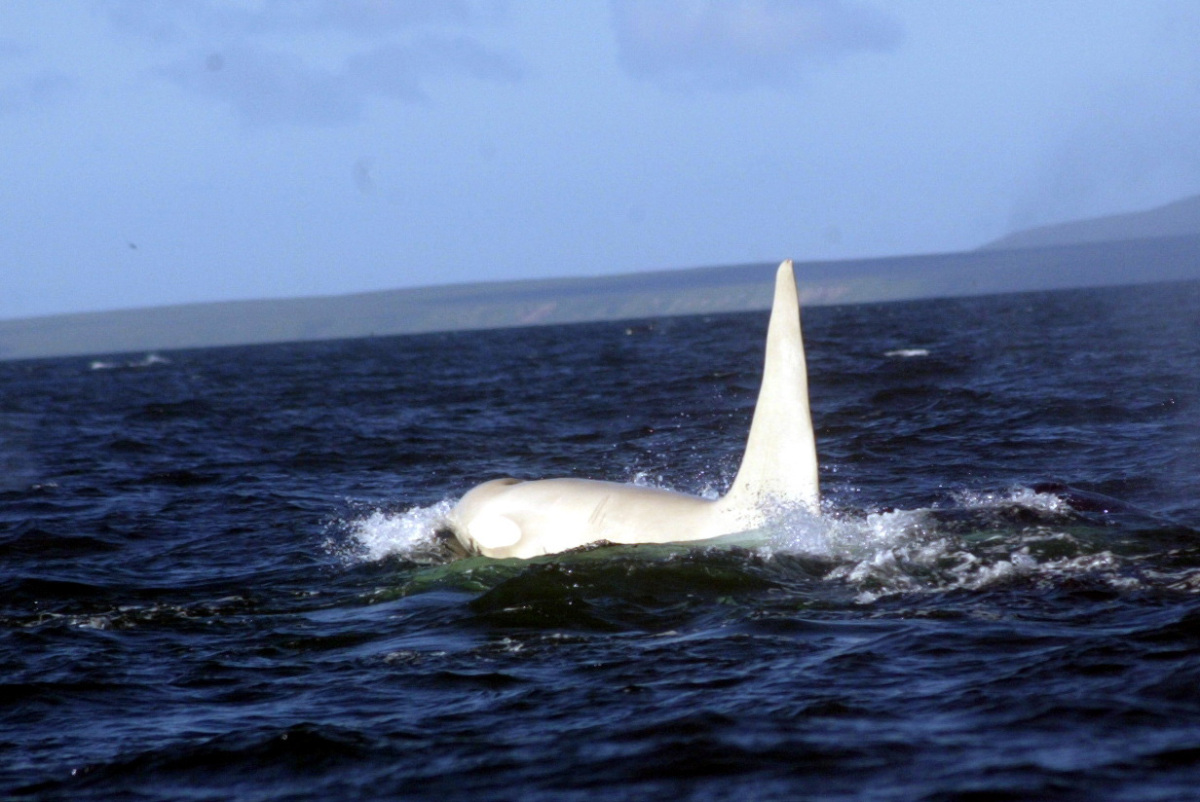
EARTH DAY, THEN AND NOW
Four Decades After Founding, EPA Faces Strong Political Opposition Despite Proven Results
World Celebrates 42nd Annual Earth Day… Upcoming Rio Earth Summit Could Mark Vital Turning Point… Al Gore: The ‘Survival Of Our Civilization’ At Stake… This Isn’t About Tree-Hugging Anymore
How Much Does a Dolphin Cost?; Offshore Drilling Is Still Risky
The Washington Post on offshore drilling, The Guardian on the cost of the BP spill, Bloomberg BusinessWeek on solar cells, The New York Times on India’s coal, and the Associated Press on Kenya’s dairy shortage
Film director James Cameron has travelled down to the deepest part of the ocean, the Mariana Trench in the western Pacific.


Hollywood director James Cameron has returned to the surface after plunging nearly 11km (seven miles) down to the deepest place in the ocean, the Mariana Trench in the western Pacific.
He made the solo descent in a submarine called Deepsea Challenger, taking over two hours to reach the bottom.
He spent more than four hours exploring the ocean floor, before a speedy ascent back to the surface.
His craft was kitted out with cameras so he could film the deep in 3D.
“It was absolutely the most remote, isolated place on the planet,” Mr Cameron told BBC News.
“I really feel like in one day I’ve been to another planet and come back.”
This is only the second manned expedition to the ocean’s deepest depths – the first took place in 1960 when US Navy Lt Don Walsh and Swiss oceanographer Jacques Piccard spent about 20 minutes on the ocean floor in a bathyscaphe called the Trieste.
The aurora borealis, the Northern Lights, are seen near the city of Tromsoe, northern Norway. Stargazers were out in force in northern Europe after the most powerful solar storm in six years.
25 January 2012

DANGEROUS WATERS
Environmentalists See Reason For Alarm In GOP Race
Florida Live Blog: Latest News On The Battle For The Sunshine State
WATERWORLD

New research that suggests Jupiter’s moon Europa has a body of water the size of the Great Lakes just two miles below its icy surface has brought scientists one step closer to determining whether or not the freezing satellite is suitable for the development of extraterrestrial life.
According to NASA, scientists have long thought that a huge ocean — more voluminous than all of earth’s oceans combined — existed below Europa’s surface. But since the moon is so far from the sun, the surface ice is thought to be tens of miles thick.
Now, scientists analyzing data from NASA’s Galileo spacecraft have found ice blocks on Europa’s surface that suggest an interaction between the moon’s icy shell and a lake-like body of water under the surface, Discovery reports.
According to Britney Schmidt, the lead author of the study that appears in the journal Nature, this could mean nutrients and energy are moving between the ocean and icy shell.
Dramatic rescue of mother and baby elephant

Sinking elephants pulled from mud
- Mother and baby elephant stuck in mud at game lodge in Zambia
- Local conservationists rescued elephants using rope and a tractor
- Elephants were at risk of dehydration and exhaustion
Most conservationists would agree that you should not interfere with mother nature. But there are exceptions to every rule.
Staff and tourists at Kapani Safari Lodge in Zambia were caught by surprise when a mother and baby elephant became trapped in mud.
Saying they couldn’t just “stand by and watch them slowly die,” what ensued was a dramatic rescue.
Together with the South Luangwa Conservation Society (SLCS) and the local wildlife authority, the team devised a plan to get the elephants out. The rest of the herd initially tried to help the screaming mother and baby escape, but they were stuck too deep.
Team managers from the conservation society slipped a rope around the baby and after a few attempts managed to pull her out of the muddy pit. The team says it took a lot of coaxing to get her out and on her feet though, adding that she “was terribly frightened and wouldn’t leave her mum’s side”.
Getting the adult elephant out of the mud was a far more challenging task — by the time the baby had been rescued, its mother was dehydrated and exhausted. But the SLCS team eventually pulled her out too, using a tractor and rope.
Staff at Kapani Lodge say it was “heart-warming to see how many local people joined in the efforts to free the two elephants… it was the happiest possible ending.”
BLAST ROCKS FRENCH NUCLEAR PLANT
One Dead, One Seriously Injured.. Authorities Say No Radiation Leaks

Our Attitudes about the Planet is Killing these Serene Moments

Zain Verjee talks with Alex Rogers about a new report warning that the world’s oceans are at a risk of extinction.
“System of urban agriculture” — a lofty goal in any city, but especially in a part of the world where “green” means something very different from “environmentally minded.

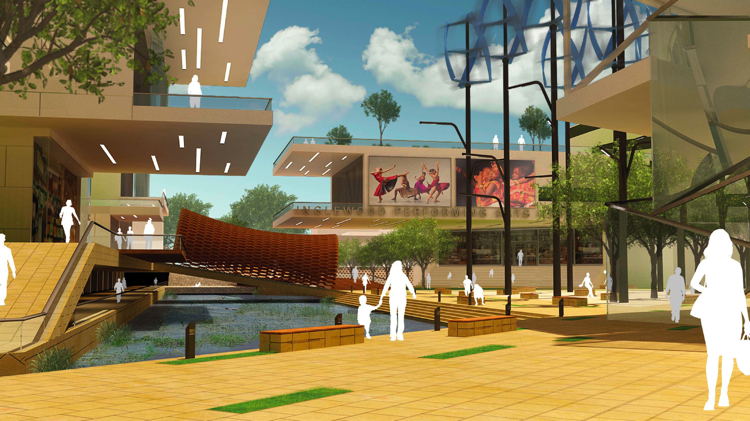
(Fer) Studio has been lobbying the local city council (though the Architect’s Newspaper describes it as “a fairly conservative” body) and recently submitted their proposal to the Living City Competition, a contest for envisioning a city that adheres to crazy-strict environmental standards. The winner scoops up $125,000 and tons of media coverage. Obviously, it’ll take more than that to turn Inglewood into the sparkling green redoubt (fer) Studio dreams of, but it could be an important stepping stone and precisely what’s needed to start proving Dre wrong.

[Images courtesy of (fer) Studio; hat tip to Architect’s Newspaper]
HOW HAVE YOU MADE A DIFFERENCE THIS EARTH DAY?
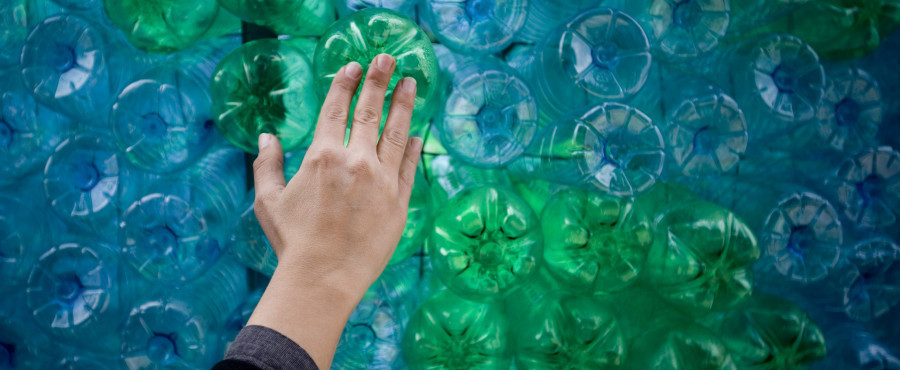
Photos: The World’s Most Polluted Places.. The Ten Greenest U.S. States..
What’s Your Energy IQ?.. On The Blog: Act Local, Act Global, But Act..
Best Movies To Watch.. Best Books To Read.. Google’s Earth Day Doodle
The Green World Campaign, in partnership with Earth Day New York, will launch an initiative to “ReGreen the World” focused on supporting the United Nations Year of Forests 2011.
Act Local, Act Global, But Act
Time-Lapse Milky Way Video Captures Nature From A Unique Perspective


The aftermath of the Fukishima disaster saw concerned citizens worldwide protesting the increase in the use of nuclear power. German citizens were particularly vocal in their criticism, and it looks like it may have had an effect. According to recent reports, the German government has decided to ‘re-examine’ the country’s 17 nuclear reactors, with Chancellor Merkel even stating that she intends on doing away with them. Even more intriguing are the country’s plans to replace the nuclear stations with wind farms.

Scientists announce discovery of new species of seabird, the first in 89 years
Photographs taken by noted ornithologist Peter Harrison and reports by members of a five-member multinational expedition, bird watchers are following what for them is the event of a lifetime: the discovery of a new species of seabird.
The existence of the sparrow-sized black and white species of storm petrel was confirmed in February near the coastal community of Puerto Montt, Chile, according to Harrison, who is scheduled to announce the find Friday evening during a banquet ceremony in San Diego hosted by the San Diego Bird Festival/Audubon California Assembly, a gathering of birders and conservationists.
“This is the first new species of storm petrel discovered in 89 years, and the first new species of seabird discovered in 55 years –- and if we had won the lottery we could not feel better,” Harrison said in an interview
“We believe this is a relic population that was completely missed by Darwin himself, who sailed along that very coast a century ago,” Harrison said.
“And guess what? There are thousands of them in that area, which is plied by cruise ships, cargo vessels and fishing boats, all within sight of crowded beaches.”
Researchers at the University of Chile in Santiago are analyzing collected blood samples and feathers to learn more about the birds, where they breed and if they migrate to wintering grounds elsewhere.
“Important discoveries usually happen in remote places like Borneo or the Amazon forests,” said Garry George, chapter network director for Audubon California.
“Not this time,” he said. “This bird has been under everyone’s noses in a popular area for decades.”
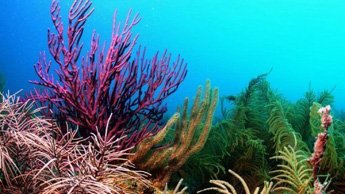
The world’s coral reefs could be extinct by 2050 if environmental stresses such as overfishing, climate change and pollution aren’t curbed.
MILKY WAY
How’s this for an astronomical estimate? There are at least 50 billion exoplanets in our galaxy. What’s more, astronomers estimate that 500 million of these alien worlds are probably sitting inside the habitable zones of their parent stars.
So how many of these exoplanets have life? Unfortunately, there’s no estimate for that question.

Butterflies spreading wings – beauty of colors presented by photographer Zhong Ming
 |
| Photography by Zhong Ming. Blog: elf-s.poco.cn |
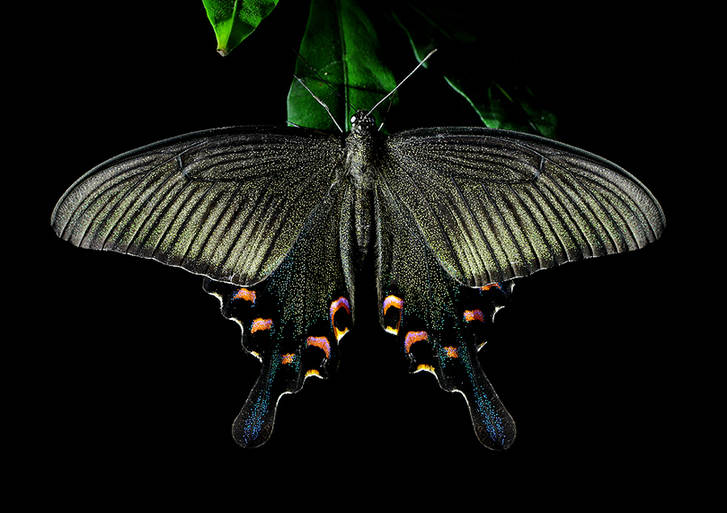 |
| Photography by Zhong Ming. Blog: elf-s.poco.cn |
 |
| Photography by Zhong Ming. Blog: elf-s.poco.cn |
Early Tuesday morning, depending on your location, many around the world were able to witness a phenomenal and rare total lunar eclipse, watching as the Earth passed directly between the sun and the full moon, shrouding it in shadow and transforming the white image into a stunning deep red glow. The event was especially significant as it coincided with the winter solstice, something that hasn’t occurred in 372 years, and won’t come around again until 2094.


“a case of cosmic murder,”
A Colorado astronomer argues that a layer of hydrogen gas drove many moons toward the planet. In the process, the ice was peeled from one giant moon; that ice began to orbit Saturn and led to rings.
Potentially bolstering her theory is the fact that the rings are 95% ice. They were once much larger, the research, published in Nature, holds—but the ice of outer rings has turned into new moons. However, this theory doesn’t explain how other planets like Jupiter and Neptune got their rings.

Stars so weird that they make black holes look boring
Leonid meteor shower rolls through the sky once a year, peaking in mid-November. It’s caused by a trail of debris that travels along the orbit of the comet Tempel-Tuttle.
The 2010 Leonid meteor shower runs from Wednesday, Nov. 10, through Sunday, Nov. 21. The peak will be the nights between the 17th and the 19th.
The Leonids are famous for being spectacular storms — since the orbit of the Temple-Tuttle comet intersects with that of Earth, the debris cloud our planet passes through each year is dense and full of particles and meteoroids. In optimal viewing conditions on a good year, you can see between 15 and 30 meteors per hour streaking across the sky during the peak.
Early date for Chinese human fossils
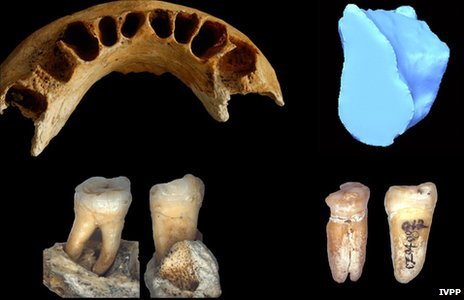
Modern humans could have reached East Asia much earlier than believed, according to new evidence.
An international team analyzed fossil teeth and part of a jaw unearthed in southern China in 2007.
In the journal PNAS, the scientists say the fragments belonged to a “modern” human who lived 100,000 years ago.
The study is likely to be controversial: the earliest humans previously known from East Asia were half this age.
Wu Liu from the Chinese Academy of Sciences led the predominantly Chinese team that worked at Zhirendong (Zhiren Cave) fossil site.
US scientist Erik Trinkaus from Washington University in St Louis and R Lawrence Edwards from the University of Minnesota in Minneapolis also took part in the study.
Dr Trinkaus explained that the ancient remains mean modern humans co-existed with our closest relatives – Neanderthals and Neanderthal-like people – across Asia.
“There are some archaic features in the specimen and that suggests to us that these are not just simply modern humans coming out of Eastern Africa, but somewhere along the way they probably intermixed with regional groups of archaic humans,”According to Professor Trinkaus .
Previous evidence for co-existence was basically between Europe and Western Asia and adjacent part of Africa, but what this suggests is that the geographical range of co-existence spread all the way across Asia, which is an enormous difference.
“This is the first evidence for that.”
The remains were spotted by scientist Chang-Zhu Jin during excavations at a site in Southern China.
The researcher was able to distinguish the valuable fossils among “the bones of a whole bunch of other mammals from a little over a 100,000 years ago”.
Professor Trinkaus said that in terms of human evolution, the remains showed distinctive modern human features – a lower jaw with a distinctive chin.
“That means that modern humans spread across at least southern Asia some 100,000 years ago,” added the scientist.
The first Goldilocks planet

National Science Foundation, shows a new planet, right. Astronomers have found a planet that is in the Goldilocks zone _ just right for life. Not too hot, not too cold. Not too far from its sun, not too close. And it is near Earth _ relatively speaking, at 120 trillion miles. It also makes scientists think that these examples of habitable planets are far more common than they thought. (AP Photo/Zina Deretsky, National Science Foundation)
Astronomers say they have for the first time spotted a planet beyond our own in what is sometimes called the Goldilocks zone for life: Not too hot, not too cold. Juuuust right.
Not too far from its star, not too close. So it could contain liquid water. The planet itself is neither too big nor too small for the proper surface, gravity and atmosphere.
It’s just right. Just like Earth.
“This really is the first Goldilocks planet,” said co-discoverer R. Paul Butler of the Carnegie Institution of Washington.
The new planet sits smack in the middle of what astronomers refer to as the habitable zone, unlike any of the nearly 500 other planets astronomers have found outside our solar system
The world`s lungs
There is hope for forests, but mankind needs to move faster if they are to be saved
The summer dry-season, now drawing to an end, is when the Amazon rainforest gets cut and burned. The smoke this causes can often be seen from space. But not this year. Brazil’s deforestation rate has dropped astoundingly fast. In 2004 some 2.8m hectares (10,700 square miles) of the Amazon were razed; last year only around 750,000 hectares were.
This progress is not isolated. Many of the world’s biggest clearers of trees have started to hug them. Over the past decade, the UN records, nearly 8m hectares of forest a year were allowed to re-grow or were planted anew. This was mostly in richer places, such as North America and in Europe, where dwindling rural populations have taken the pressure off forestland. But a couple of big poorer countries, notably China, have launched huge tree-planting schemes in a bid to prevent deforestation-related environmental disasters. Even in tropical countries, where most deforestation takes place, Brazil is not alone in becoming more reluctant to chop down trees.
The progress made in recent years shows that mankind is not doomed to strip the planet of its forest cover. But the transition from tree-chopper to tree-hugger is not happening fast enough. Over the past decade, according to UN figures, around 13m hectares of forestland—an area the size of England—was converted each year to other uses, mostly agriculture. If the world is to keep the protective covering that helps it breathe, waters its crops, keeps it cool and nurtures its biodiversity, it is going to have to move fast (see our special report this week).

-
Will a Commercial Flight be First To Mars?
The way to finally get to Mars may be to fly the friendly skies aboard a commercial spaceliner.
Both President Obama and NASA Administrator Charles Bolden have expressed optimism about seeing a manned Mars landing happen within their lifetime.
The way to finally get to Mars may be to fly the friendly skies aboard a commercial spaceliner (luggage and food costs extra) and, for the first time, a private aerospace contractor is setting their sights on the Red Planet. Space Exploration TechnologiesSaturn V class heavy lifters. (SpaceX) recently unveiled a long-range plan that would evolve their rocket booster fleet up to

-
Dino-Era Bird Fought Like Muhammad Ali
Like the heavyweight champ, this bird could float like a butterfly and sting like a bee.
Indian Ocean Corals Walloped by Warming
— By Julia Whitty
 — Photo by Nick Hobgood, courtesy Wikimedia Commons
— Photo by Nick Hobgood, courtesy Wikimedia Commons
A dramatic rise in sea surface temperatures off Indonesian has resulted in a large-scale coral bleaching event and the death of up to 80 percent of coral cover. Rising water temperatures stress corals. If stressed enough, they expel their plant symbionts: the zooxanthellae that give corals color and perform many of their important metabolic activities. Without their plant partners, corals weaken and will eventually die.
In May, the Wildlife Conservation Society‘s (WCS) “Rapid Response Unit” of marine biologists, dispatched to investigate coral bleaching off the northern tip of the island of Sumatra, found more than 60 percent of corals bleached. Subsequent monitoring revealed one of the most rapid and severe coral mortality events ever recorded, with 80 percent of some species of corals killed since May. More colonies are expected to die in the coming months.
The die-off is due to a frighteningly high rise in sea surface temperatures in the Andaman Sea, north of Sumatra. NOAA‘s Coral Hotspots website records temperatures in the region peaking in late May 2010 at 34 degrees Celsius/93 degrees Fahrenheit. That’s 4 degrees C/7 degrees F higher than long-term averages for the area. If you’ve ever swum or dived in water that warm, you’ll know it feels uncomfortably hot.
Many of these same reefs miraculously escaped damage during the Indian Ocean Tsunami in 2004. Others that had been severely damaged by poor land use and destructive fishing practices before the tsunami actually recovered afterwards dramatically. That’s thanks to improved management, aimed at maintaining fish biomass while allowing fishing on the reefs. But the bleaching and mortality of 2010 have toppled this recovery and will profoundly wallop reef fisheries.
Of real concern: the scale of the sea surface temperature anomaly, which has affected the entire Andaman Sea and beyond. Similar mass bleaching events of 2010 have now been recorded in Sri Lanka, Thailand, Malaysia and many parts of Indonesia. If this scale of mortality is found at other sites, the event will enter the record books as the worst bleaching ever recorded in the region. WCS Marine Program Director Dr. Caleb McClennen tells WCI:
“This is a tragedy not only for some of the world’s most biodiverse coral reefs, but also for people in the region, many of whom are extremely impoverished and depend on these reefs for their food and livelihoods. Immediate and intensive management will be required to try and help these reefs, their fisheries, and the entire ecosystem to recover and adapt. However, coral reefs cannot be protected from the warming ocean temperatures brought on by a changing climate by local actions alone. This is another unfortunate reminder that international efforts to curb the causes and effects of climate change must be made if these sensitive ecosystems and the vulnerable human communities around the world that depend on them are to adapt and endure.”
Fed up with secrecy shrouding reports of flying saucers, Brazil has decreed that any UFO sightings will now be logged by the government and made available to researchers of the paranormal.
A government decree issued this week orders Brazilian military and civilian pilots, as well as air traffic controllers, to register any sightings with the country’s aerospace defense command — and to include any video or photos if they have them.
A list of sightings will also be kept in the national archives in Rio de Janeiro, and made available to anyone seeking evidence of extraterrestrial life, the decree said, according to media reports.
The decree, signed by Brazilian Air Force chief Juniti Saito, said the Air Force would only catalog UFO sightings and wasn’t able to investigate each individual report.
“Air Force command does not have a specialized structure to carry out scientific experiments on these phenomena and will limit itself to recording any events,” the decree said, according to the BBC.

Brazil’s somewhat bizarre new transparency on UFO sightings comes after revelations last week that British Prime Minister Winston Churchill sought to keep UFO reports secret during World War II, fearing mass panic and loss of religious faith.
Brazil, it seems, isn’t worried. In fact, government officials have been quoted as saying the phenomena are quite common and ought to be investigated outright.
“There are reports by [government] ministers and even a president who saw a UFO,” an unnamed military air traffic controller told the Brazilian newspaper O Dia, according to Agence France-Presse.
Gulf of Mexico the Richest Area of the Ocean
It is ironic that the Gulf of Mexico should prove to be one of the most biodiverse parts of the ocean, given that it is now facing the Deepwater Horizon oil spill, not to mention the huge pre-existing “dead zone” caused by fertiliser run-off from US farms.
It boasts over 15,000 known species spread over just 1.5 million square kilometres of ocean – a far higher species density than the seas around Australia, whose 40,000 known species sprawl over 13.6 square kilometres.
This Venus fly trap anemone was found at a depth of 1500 metres. Like the land plant of the same name, it closes its tentacles to trap its prey.
Every black hole may hold a hidden universe
WE COULD be living inside a black hole. This head-spinning idea is one cosmologist’s conclusion based on a modification of Einstein’s equations of general relativity that changes our picture of what happens at the core of a black hole.
In an analysis of the motion of particles entering a black hole, published in March, Nikodem Poplawski of Indiana University in Bloomington showed that inside each black hole there could exist another universe (Physics Letters B, DOI: 10.1016/j.physletb.2010.03.029). “Maybe the huge black holes at the centre of the Milky Way and other galaxies are bridges to different universes,” Poplawski says. If that is correct – and it’s a big “if” – there is nothing to rule out our universe itself being inside a black hole.
Innovation: Google knows your desires before you do
In the future, search engines could know what you want before you do – if you’re willing to trust them with the details of your private life




















